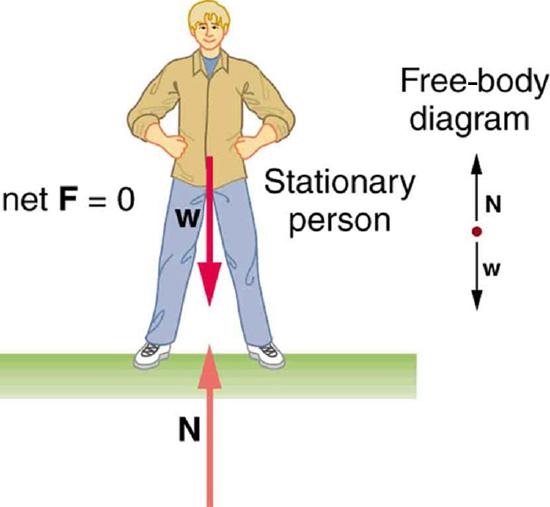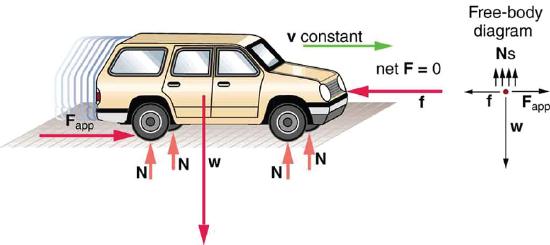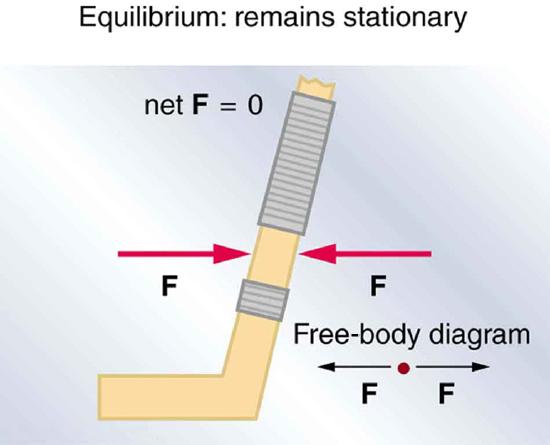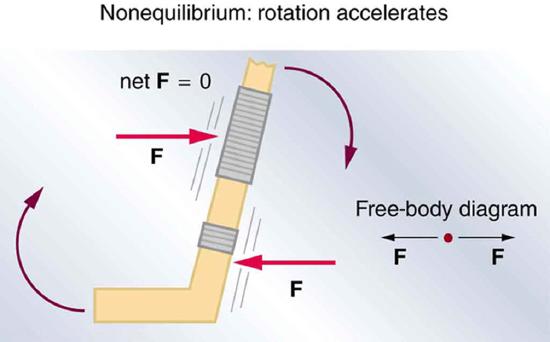9.1: The First Condition for Equilibrium
- Page ID
- 1545
Learning Objectives
By the end of this section, you will be able to:
- State the first condition of equilibrium.
- Explain static equilibrium.
- Explain dynamic equilibrium.
The first condition necessary to achieve equilibrium is the one already mentioned: the net external force on the system must be zero. Expressed as an equation, this is simply
\[net \, F = 0\]
Note that if net \(F\) is zero, then the net external force in any direction is zero. For example, the net external forces along the typical x- and y-axes are zero. This is written as
\[net \, F_x \, and \, F_y = 0\]
Figuress \(\PageIndex{1}\) and \(\PageIndex{2}\) illustrate situations where \(net \, F = 0\) for both static equilibrium (motionless), and dynamic equilibrium (constant velocity).


However, it is not sufficient for the net external force of a system to be zero for a system to be in equilibrium. Consider the two situations illustrated in Figures \(\PageIndex{3}\) and \(\PageIndex{4}\) where forces are applied to an ice hockey stick lying flat on ice. The net external force is zero in both situations shown in the figure; but in one case, equilibrium is achieved, whereas in the other, it is not. In Figure \(\PageIndex{3}\), the ice hockey stick remains motionless. But in Figure \(\PageIndex{4}\), with the same forces applied in different places, the stick experiences accelerated rotation. Therefore, we know that the point at which a force is applied is another factor in determining whether or not equilibrium is achieved. This will be explored further in the next section.


PhET Explorations: Torque
Investigate how torque causes an object to rotate. Discover the relationships between angular acceleration, moment of inertia, angular momentum and torque.
Summary
- Statics is the study of forces in equilibrium.
- Two conditions must be met to achieve equilibrium, which is defined to be motion without linear or rotational acceleration.
- The first condition necessary to achieve equilibrium is that the net external force on the system must be zero, so that \(F = 0\).
Glossary
- static equilibrium
- a state of equilibrium in which the net external force and torque acting on a system is zero
- dynamic equilibrium
- a state of equilibrium in which the net external force and torque on a system moving with constant velocity are zero


